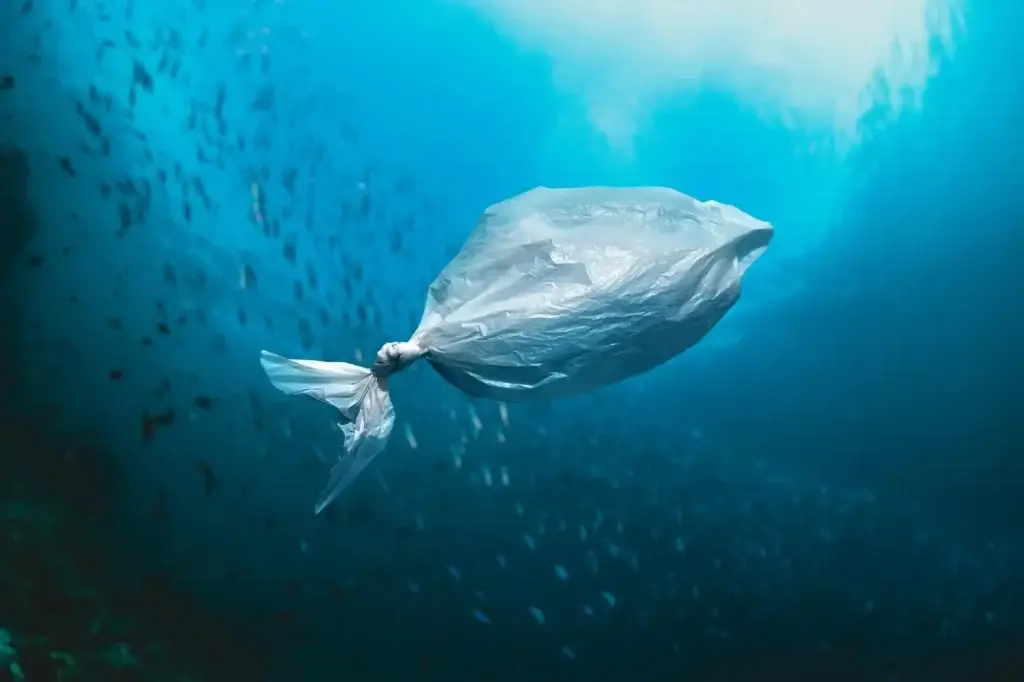The Link Between Climate Change
and Ocean Acidification

Link Between Climate Change and Ocean Acidification
01
The Link Between Climate Change and Ocean Acidification
The Link Between Climate Change and Ocean Acidification
As the planet warms, the effects of climate change and the ocean are becoming increasingly interconnected. One of the most alarming consequences of this relationship is ocean acidification, a silent yet dangerous transformation of our marine environment. Often overshadowed by rising temperatures and melting glaciers, ocean acidification is nonetheless a critical environmental issue that poses a direct threat to marine biodiversity, fisheries, and global food security.
Understanding the connection between climate change and the ocean is essential to tackling one of the most complex environmental challenges of our time. In this blog, we will explore how human-driven climate change leads to ocean acidification, why it matters, and what we can do to reduce its impact.
What is Ocean Acidification?
Ocean acidification refers to the reduction in the pH of the ocean over an extended period, primarily caused by the uptake of carbon dioxide (CO₂) from the atmosphere. Since the Industrial Revolution, human activities such as burning fossil fuels, deforestation, and large-scale agriculture have dramatically increased atmospheric CO₂ levels.
The ocean absorbs approximately 25–30% of this CO₂. When CO₂ dissolves in seawater, it forms carbonic acid. This weak acid then breaks down into bicarbonate and hydrogen ions. The increase in hydrogen ions lowers the ocean’s pH, making it more acidic.
This chemical process is a direct link between climate change and the ocean, showing how human emissions affect marine chemistry.
How Climate Change Causes Ocean Acidification
While ocean acidification is primarily caused by CO₂ absorption, it is deeply intertwined with the broader processes of climate change and the ocean. Here’s how:
- Rising CO₂ emissions: Fossil fuel combustion is the main driver of climate change. The excess CO₂ doesn’t only warm the atmosphere—it also dissolves in the ocean, triggering acidification.
- Warming ocean temperatures: Warmer water holds less CO₂, which might seem like a good thing. However, this also reduces the buffering capacity of seawater, making the ocean more sensitive to acidification.
- Melting polar ice: Melting ice dilutes seawater and alters its chemistry, accelerating ocean acidification, particularly in the Arctic and Antarctic regions.
Thus, climate change and the ocean are part of a feedback loop—warming causes more acidification, and acidification further weakens the ocean’s ability to support life.
Impacts of Ocean Acidification on Marine Life
Ocean acidification poses a serious threat to a wide range of marine species. As pH levels drop, calcium carbonate—a crucial building block for many organisms—becomes less available. Here’s how that affects marine life:
1. Shell-forming species
Organisms such as corals, oysters, clams, sea urchins, and some plankton rely on calcium carbonate to build their shells and skeletons. In acidic conditions, their shells can dissolve, making them more vulnerable to predators and environmental stress.
2. Coral reefs
Coral reefs, often referred to as the “rainforests of the sea,” are highly sensitive to ocean acidification. Reduced calcification rates lead to weaker reef structures, making them more susceptible to erosion and bleaching—especially when combined with rising temperatures due to climate change and the ocean interactions.
3. Food chains
Plankton are the foundation of the marine food web. Some plankton species have calcium carbonate shells and are directly affected by acidification. This disruption can ripple through the entire ecosystem, affecting fish, marine mammals, and even humans.
4. Behavioral changes in fish
Recent studies suggest that ocean acidification can alter fish behavior, impairing their ability to detect predators or navigate effectively, which could have long-term effects on survival and reproduction.

Economic and Social Consequences
The effects of ocean acidification extend far beyond marine life. Coastal economies, especially those dependent on fisheries and tourism, are at serious risk. Here’s how:
- Fisheries and aquaculture: Shellfish industries are already experiencing significant losses due to lower reproduction and survival rates. This threatens food security and the livelihoods of millions of people globally.
- Tourism: Coral reef degradation leads to a decline in tourism in tropical regions, affecting both local businesses and national economies.
- Cultural heritage: Indigenous and coastal communities that rely on marine species for subsistence and cultural practices face identity and heritage erosion due to climate change and the ocean disruption.
Ocean Acidification in Different Regions
Ocean acidification does not occur evenly across the globe. Some regions are more vulnerable due to temperature, ocean currents, or local CO₂ emissions.
- Polar regions: Cold water holds more CO₂, accelerating acidification. Arctic ecosystems are among the most vulnerable, threatening species like krill and polar cod.
- Upwelling zones: Areas like the Pacific Northwest experience seasonal upwelling, which brings CO₂-rich deep water to the surface. These areas see intensified ocean acidification.
- Tropical reefs: Already stressed by warming, these ecosystems suffer double harm from climate change and the ocean acidification, jeopardizing biodiversity hotspots.
How Scientists Monitor Ocean Acidification
Monitoring ocean acidification is essential to understanding its progression and impacts. Scientists use various tools, such as:
- pH sensors and floats: These are deployed across oceans to measure pH and CO₂ levels in real-time.
- Remote sensing: Satellites help observe temperature and chlorophyll levels, indirectly indicating ocean health.
- Research vessels: Ship-based studies gather samples for in-depth chemical and biological analysis.
- Ocean observatories: Stations around the world collect long-term data on climate change and the ocean, aiding predictive models.
These monitoring systems are crucial for policymakers and researchers to design effective mitigation strategies.
Solutions and Mitigation Strategies
Though the problem is serious, there are ways to address ocean acidification. The most effective approach is reducing global CO₂ emissions, but other strategies are also being explored.
1. Reducing CO₂ emissions
Cutting back on fossil fuel use is the most direct way to reduce the root cause of ocean acidification. This means transitioning to renewable energy, improving energy efficiency, and enforcing carbon regulations.
2. Ocean alkalinity enhancement
Scientists are exploring the addition of alkaline substances to seawater to neutralize acidity. Though still in early stages, this geoengineering approach could buffer ocean pH.
3. Protecting marine ecosystems
Marine Protected Areas (MPAs) offer a refuge for vulnerable species. Healthy ecosystems are more resilient to climate change and the ocean acidification stress.
4. Restoring coastal habitats
Mangroves, seagrasses, and salt marshes act as carbon sinks and can locally mitigate ocean acidification. Restoration of these habitats also supports biodiversity and reduces erosion.
5. Sustainable aquaculture
By selecting acidification-resistant species and improving hatchery conditions, aquaculture can adapt to changing ocean chemistry while reducing its environmental footprint.
What Can You Do to Help?
While large-scale solutions require policy changes and scientific innovation, individuals also have a role to play in fighting climate change and the ocean degradation:
- Reduce your carbon footprint by using public transport, eating sustainably, and conserving energy.
- Support organizations working on marine conservation.
- Choose sustainably sourced seafood.
- Educate others about ocean acidification and advocate for climate-friendly policies.
- Avoid single-use plastics and chemicals that harm marine life.
The connection between climate change and the ocean is complex but undeniable. Ocean acidification is a clear sign that our actions on land directly impact the sea. As CO₂ levels rise, the ocean becomes more acidic, threatening marine life, economies, and the delicate balance of Earth’s ecosystems.
If we are to safeguard our oceans for future generations, the time to act is now. By understanding this issue and taking steps to reduce our carbon emissions, protect marine ecosystems, and support scientific research, we can turn the tide on ocean acidification.
FAQs
02
FAQs on The Link Between Climate Change and Ocean Acidification
What causes ocean acidification?
Ocean acidification is caused by the absorption of carbon dioxide (CO₂) from the atmosphere into seawater, forming carbonic acid that lowers the ocean’s pH.
How is ocean acidification related to climate change?
Both are caused by excessive CO₂ emissions. While CO₂ warms the planet (climate change), it also dissolves into the ocean, causing acidification.
What marine species are most affected by ocean acidification?
Shell-forming organisms like corals, oysters, and some plankton are most vulnerable because acidification reduces their ability to build and maintain shells.
Can we reverse ocean acidification?
Reducing CO₂ emissions is the most effective way. Other solutions like ocean alkalinity enhancement and habitat restoration are being researched.
How does ocean acidification impact humans?
It affects fisheries, food security, economies, and coastal communities that rely on marine life for sustenance and income.
What are scientists doing to monitor ocean acidification?
They use pH sensors, research vessels, satellites, and ocean observatories to collect data and understand acidification patterns.
03
Connect With Us
CONNECT WITH US
Partner with SeasYourDreams.org to create lasting impact. Together, we fund ocean research, inspire through STEM education, and grant medical wishes. Join a network of change makers committed to sustainability, innovation, and compassion. Collaborate with us to amplify efforts and transform lives. Let’s make waves of positive change—partner with us today!
04
INFO
© 2025 | SeasYourDreams. All rights reserved.
